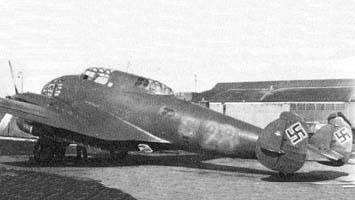
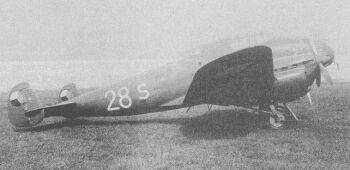
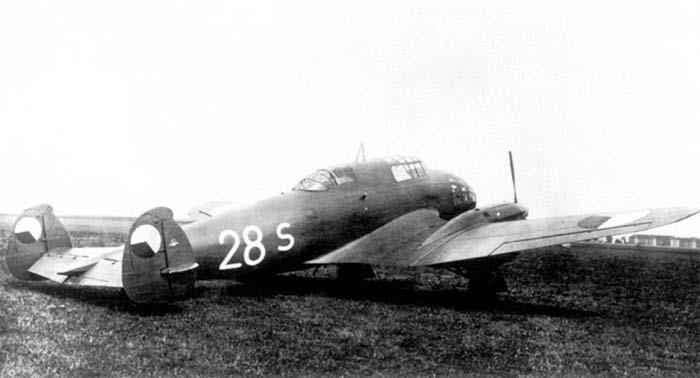
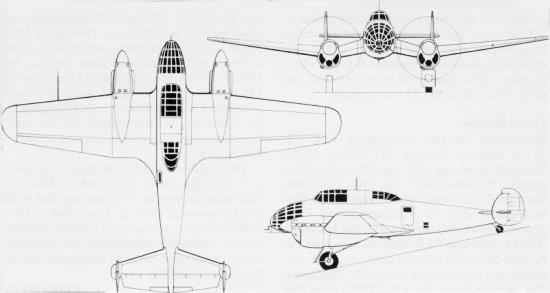
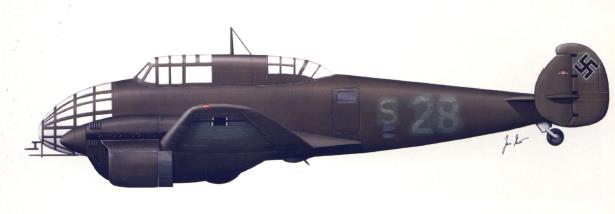
In January 1936, the Aviation Department of the Ministry of the Czechoslovak People's Defence (MNO) has developed a program of modernization of the fleet Air Force (CSVL), pursuant to which was to build several new aircraft for various purposes. Among them was the specification on average dvhmotorny bomber with high flight data that can operate both day and night, originally were designated as Type IV. Finally, the terms of reference were issued in August 1936 and immediately issued several aviafirmam. Based on current requirements Letov firm submitted a draft S-43, the firm Aero from the earlier project A-206 started to develop aircraft A-300, and the firm CKD-Praga - Project E-48. In turn, firm Avia presented two projects at once bomber design which took place under the guidance of engineers Francis and Robert Novotny Nebesara. Aircraft Novotny, held under the designation B-36 was sredneplanom with retractable landing gear and two in-line engines Hispano-Suiza HS12Ydrs. The design speed of the B-36 was 450 km \ h bomb load - 1200 kg.
At the same time Nebesar, mainly based on an unrealized project B-58 back in May 1936, has developed a new all-metal bomber B-158, which is under the same engines can reach speeds of up to 482 km \ h
Given even a small one, but still an increase in speed performance, the management has given priority to the project Avia B-158, the construction of which began in late 1936 on the scheme it was a low-wing monoplane with a type of "reverse gull" in places where the fracture mounted engines HS 12Ydrs. The main landing tricycle landing gear is fully retracted into the recess of the pods. The empennage, partly to increase the arc of fire, performed two-keel. The aircraft crew consisted of four: pilot, navigator, bombardier and radio operator's hand. Defensive armament consisted of three 7.92-mm machine gun with 1,000 rounds per gun.
A prototype of the B-158 with the number of S28 was completely ready to fly Nov. 11, 1937 While it was building, it was decided to carry out a prototype version of a four-scout with the fuselage and the possibility of placing cameras in the bomb bay lighting ten bombs. When the plane took off it appeared that the bomber was a mass of 640 kg on the above project, and the rate was only 435 km \ h Expectations of designers, so only partly justified. In a matter of urgency to prepare working drawings for modifications to the bomber-158V. The aircraft crew was reduced to three people at the same time reducing the number of defensive guns to two. In the bomb bay could now be placed 500 kg bombs, and on the external load per 500 kg or two 250 kg bombs. The project was approved, but remained only on paper.
Tests B-158 continued with varying degrees of success but in March 1939, but even then it was clear that the winner will be announced bomber Aero A-300. However, taken into the arms of both planes prevented the occupation of Czechoslovakia. German specialists interested in Czechoslovak developments, allowing work to continue later on some of them, but the bomber A-300 and B-158 is not affected by the decision. In the summer of the same year, the B-158 struck the German markings and ferried to the test center at Rechlin, where it conducted a series of test flights. As the bomber showed mediocre flight data testing it soon ended in 1940 dismantled the metal.
| Type |
3-seat bomber |
| Engine |
2 Avia (Hispano-Suiza) 12Ydrs |
| Dimensions |
Length 12,00 m , height 5,20 m, span 16,00 m , wing area 43,0 m2 |
| Weights |
Empty 4300 kg, loaded 6600 kg, max. take off weight 7250 kg |
| Performance |
Max.. speed 435 km/h , cruising speed 365 km/h , range 1100 km, endurance , service. ceiling 8500 m , initial climb 7,00 m/sec. |
| Armament |
Guns: 3×7.92 mm vz.30 (Česká zbrojovka Strakonice) machine guns in nose, dorsal and ventral positions Bombs: 1,000 kg (2,200 lb) |
| Type |
Werk.Nr |
Registration |
History |
|
|
|
|





